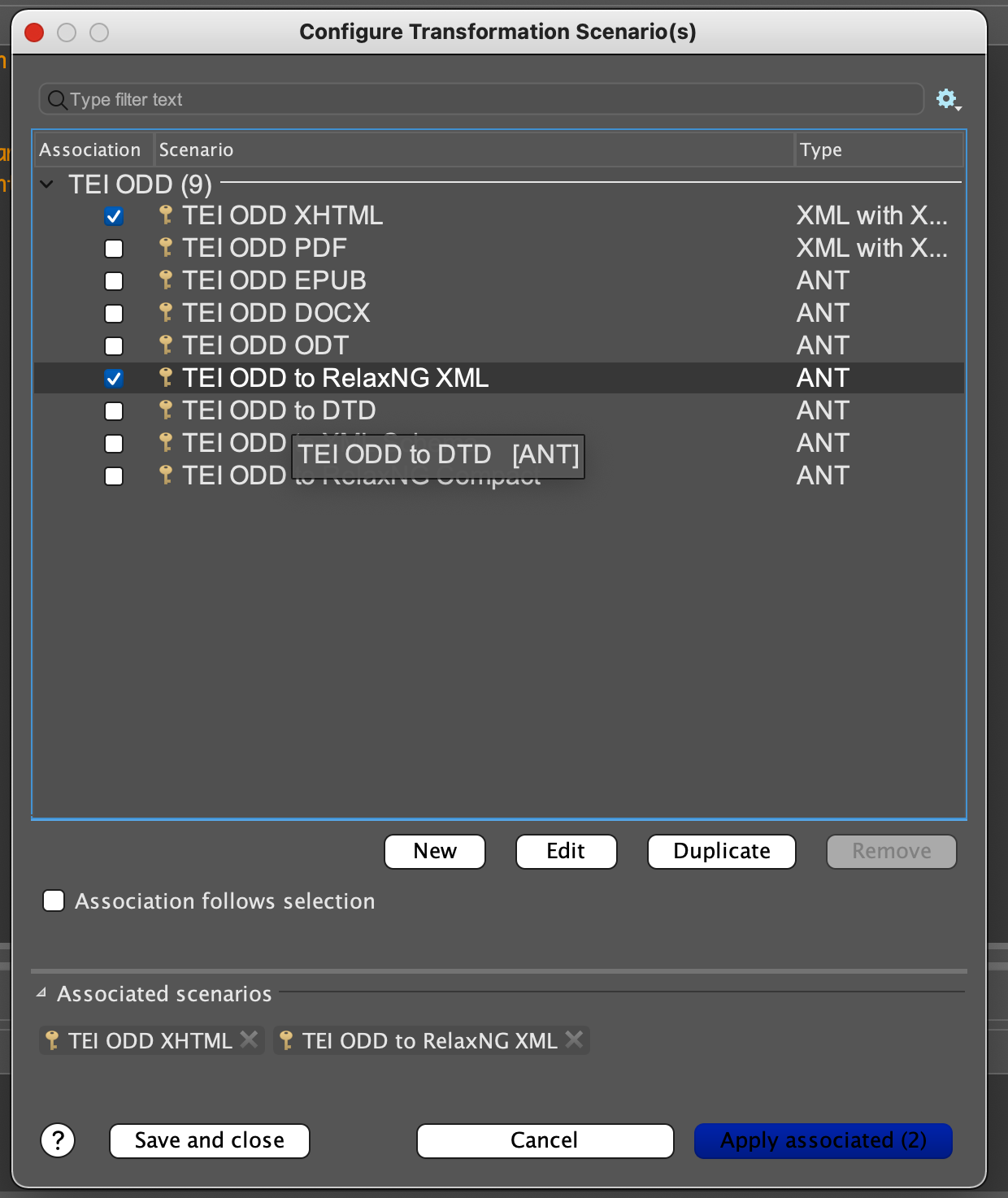 Last modified:
Wednesday, 15-Oct-2025 18:22:39 UTC. Maintained by: Elisa E. Beshero-Bondar
(eeb4 at psu.edu). Powered by firebellies.
Last modified:
Wednesday, 15-Oct-2025 18:22:39 UTC. Maintained by: Elisa E. Beshero-Bondar
(eeb4 at psu.edu). Powered by firebellies. Last modified:
Wednesday, 15-Oct-2025 18:22:39 UTC. Maintained by: Elisa E. Beshero-Bondar
(eeb4 at psu.edu). Powered by firebellies.
Last modified:
Wednesday, 15-Oct-2025 18:22:39 UTC. Maintained by: Elisa E. Beshero-Bondar
(eeb4 at psu.edu). Powered by firebellies.Up to this point, we have been applying code based on researching the Guidelines of the Text Encoding Initiative (TEI) and seeing what is available to us in the oXygen XML Editor on a TEI-All document. TEI projects often begin this way, exploring what is possible in the hundreds of elements and attribute options available. However, sooner or later as a project continues, it is best to customize the TEI by reducing the options we want to be available within a project. What elements are we actually using and how much of the TEI do we really need?
Customizing the TEI involves a process of generating a new Relax NG schema that typically represents a much smaller subset of the TEI. We could also introduce some of our own custom elements from outside the TEI (as in make up some elements that are not otherwise represented in the TEI Guidelines), but that is a little more advanced and usually unecessary for most TEI projects.
So, how do we access the TEI Relax NG schema? Because the TEI represents such a large schema, we
do not edit its Relax NG directly. (TEI Relax NG is typically expressed in
the verbose XML syntax because it requires some functionality from XML processing
code that is not available in the Relax NG Compact Syntax you have learned to
write.) Instead, to customize the TEI, we work with a TEI language called
ODD for One Document Does it all
. ODD syntax concisely
expresses in XML which modules of the TEI we are working with (clusters of TEI
elements grouped based on their functionality and purpose; currently there are 20
modules as of this writing in 2022). In preparing an ODD, when we represent a module, we can also
indicate which of its elements we want to include (throwing out all the others) or
which ones we want to exclude (keeping the rest). TEI ODD XML can
also express specific customizations, to lay out which attribute values you want to
use in your project customization for, say, the attribute @xml:id on the
handNote element.
Here I have linked an example of an ODD customization made by students working on a project to encode Hamilton the Musical, with lots of customized attribute values mostly for providing distinct identifiers for characters in the musical. Since we are working with manuscripts and other kinds of materials, our ODD customizations will certainly look different from this: we will need to work with different modules, but we will still want to customize them as we see in the ODD file, to determine which elements we ware going to use and to indicate what values we want to work with on some of the attributes.
To explore how to create an ODD, it helps to have a TEI file with something to customize for your project, like for example a set of attribute values. Try creating a TEI file for your project where you plan to use some specialized elements, with attributes where you store some specific values custom to your project. Here are some suggestions:
w element and working on it with @ana attributes for categorizing the kind of word, or using the @pos
to mark its part of speech (see some examples/discussion in the TEI Guidelines Analytic Mechanisms chapter.placeName, orgName, or persName elements, and setting up some in-houseshort project identifiers for main characters, like this TEI example from the Dandandan project team.
@type
and (optional) @subtype attributes, and your project might want to customize what values you want to use for type and/or subtype attributes. For example, you could
be categorizing articles in an historic issue of Vogue magazine as type="politics" or type="fashionTips".A good place to begin work on an ODD customization is a tool designed for TEI called Roma, available at https://romabeta.tei-c.org/. This is where we created our starter ODD for class, which I downloaded and pushed to our textEncoding-Hub repo, and stored in Class Examples >> TEI. For this exercise, you may begin with this ODD file and continue to customize it, or you may start from scratch exploring how to include and exclude elements in Roma Beta. My assignment for you is simply to refine what we started, to try the following:
handNote element to customize the attributes on it, and give
them specific values. looking stuff upin the TEI Guidelines, that is Googling for
TEI P5 whateverYouLookForto see element spec pages and examples of how these are used in TEI projects.
Customization as ODD. 
out/ just below the ODD and the ODD XHTML file. Your next task
is to associate that schema with your TEI XML file and see if your
code is valid to the schema. If it is not, try to amend your coding to work with
the ODD schema, or update the ODD (using Roma or the ODD file in oXygen) to
generate an improved schema. .odd extension..html
extension). .xml extension). Add XML comments to either of these files if you are
having trouble getting the ODD schema to validate your XML.